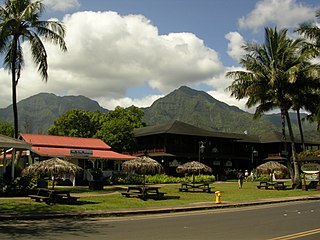
Hanalei is a census-designated place (CDP) in Kauaʻi County, Hawaii, United States. The population was estimated at 299 as of 2019. Hanalei means "lei making" in Hawaiian. Alternatively, the name Hanalei also means "crescent bay" and may be indicative of the shape of Hanalei Bay. Hanalei can also be translated as lei valley, referring to the rainbows that color the valley and encircle Hanalei like a wreath.

III Marine Expeditionary Force is a formation of the Marine Air-Ground Task Force of the United States Marine Corps. It is forward-deployed and able to rapidly conduct operations across the spectrum from humanitarian assistance and disaster relief (HA/DR) to amphibious assault and high-intensity combat.

Michael Strank was a United States Marine Corps sergeant who was killed in action during the Battle of Iwo Jima in World War II. He was one of the Marines who raised the second U.S. flag on Mount Suribachi on February 23, 1945, as shown in the iconic photograph Raising the Flag on Iwo Jima by photographer Joe Rosenthal. Of the six Marines depicted in the photo, Strank was the only one to be correctly identified from the beginning; the other five were either assigned the wrong locations, or, were given the names of Marines who were not in the photo.

The Battle of Guam was the American recapture of the Japanese-held island of Guam, a U.S. territory in the Mariana Islands captured by the Japanese from the United States in the First Battle of Guam in 1941 during the Pacific campaign of World War II. The battle was a critical component of Operation Forager. The recapture of Guam and the broader Mariana and Palau Islands campaign resulted in the destruction of much of Japan's naval air power and allowed the United States to establish large airbases from which it could bomb the Japanese home islands with its new strategic bomber, the Boeing B-29 Superfortress.

Beach Red is a 1967 World War II film starring Cornel Wilde and Rip Torn. The film depicts a landing by the United States Marine Corps on an unnamed Japanese-held Pacific island. The film is based on Peter Bowman's 1945 novella of the same name, which was based on his experiences with the United States Army Corps of Engineers in the Pacific War.

John Henry "Jack" "Doc" Bradley was a United States Navy Hospital corpsman who was awarded the Navy Cross for extraordinary heroism while serving with the Marines during the Battle of Iwo Jima in World War II. During the battle, he was a member of the patrol that captured the top of Mount Suribachi and raised the first U.S. flag on Iwo Jima on February 23, 1945.

The Raid on Choiseul was a small unit engagement that occurred from 28 October to 3 November 1943, during the Solomon Islands campaign of the Pacific War. The raid was launched to divert the Japanese from the Allied landings at Cape Torokina on Bougainville Island.
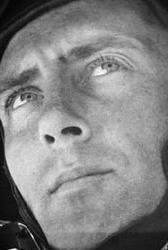
Henry Oliver Hansen was a United States Marine Corps sergeant who was killed in action during the Battle of Iwo Jima in World War II. He was a member of the patrol that captured Mount Suribachi, where he helped raise the first U.S. flag on Iwo Jima on February 23, 1945. He was killed six days later.

The 2nd Battalion, 28th Marine Regiment is an infantry battalion of the United States Marine Corps. The battalion which is part of the 28th Marine Regiment, 5th Marine Division, fought in the Battle of Iwo Jima during World War II. Six Marines of E Company, 2nd Battalion, 28th Marines were featured in the historical photo by Joe Rosenthal of the U.S. flag raising on top of Mount Suribachi.
Harold George Schrier was a United States Marine Corps lieutenant colonel who served in World War II and the Korean War. In World War II, he was awarded the Navy Cross for leading the patrol that captured the top of Mount Suribachi, where he helped raise the first U.S. flag on Iwo Jima on February 23, 1945. In the Korean War, he was wounded in North Korea during the Battle of Chosin Reservoir while commanding a rifle company.
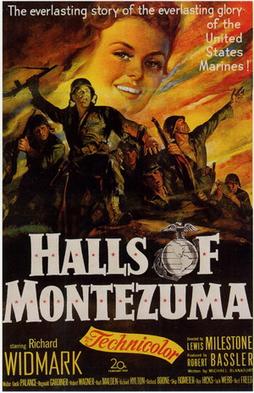
Halls of Montezuma is a 1951 American World War II war film directed by Academy Award-winner Lewis Milestone and starring Richard Widmark. It also stars Robert Wagner in his first credited screen role and features Richard Boone in his feature-film debut. The story is about U.S. Marines fighting on a Japanese-held island, and the title is a reference to the opening line from the Marines' Hymn.
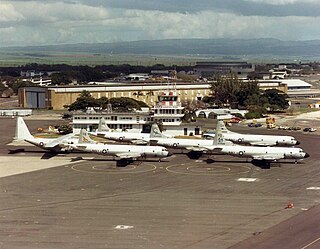
Naval Air Station Barbers Point, on O'ahu, home to John Rodgers Field, is a former United States Navy airfield closed in 1999, and renamed Kalaeloa Airport. Parts of the former air station serve as a film and television studio for the Hawaii State Film Office.
Gung Ho! is a 1943 American war film directed by Ray Enright and starring Randolph Scott. The story is based somewhat on the real-life World War II Makin Island raid led by Lieutenant Colonel Evans Carlson's 2nd Marine Raider Battalion.

Frank Bryan Goettge was a United States Marine Corps intelligence officer in World War II. He led the ill-fated Goettge Patrol in the early days of the Guadalcanal campaign and was killed during that operation.
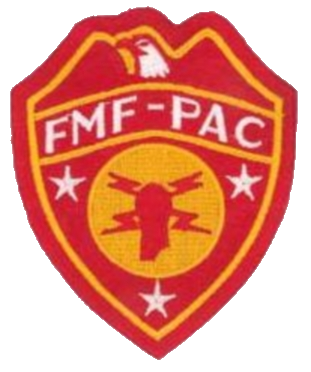
The United States Marine Corps's Amphibious Reconnaissance Battalion, formerly Company, was a Marine Corps special operations forces of United States Marine and Hospital corpsman that performed clandestine operation preliminary pre–D-Day amphibious reconnaissance of planned beachheads and their littoral area within uncharted enemy territory for the joint-Navy/Marine force commanders of the Pacific Fleet during World War II. Often accompanied by Navy Underwater Demolition Teams and the early division recon companies, these amphibious recon platoons performed more reconnaissance missions than any other single recon unit during the Pacific campaigns.
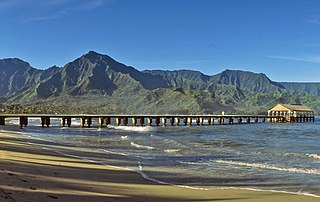
Hanalei Pier is a pier built into Hanalei Bay on the northern shore of the island of Kauaʻi in the state of Hawaii.
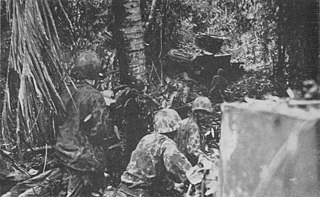
The Battle of the Coconut Grove was a battle between United States Marine Corps and Imperial Japanese Army forces on Bougainville Island during the Pacific War. The battle took place on 13–14 November 1943 during the Bougainville campaign, coming in the wake of a successful landing around Cape Torokina at the start of November, as part of the advance towards Rabaul as part of Operation Cartwheel.
Tarawa Beachhead is a 1958 war film directed by Paul Wendkos. It stars Columbia Pictures contract star Kerwin Mathews in his first leading role and the husband and wife team of Ray Danton and Julie Adams. The working title of the film was Flag over Tarawa and was originally to have starred Ronald Reagan.

Hold Back the Night is a 1956 American war film about the Korean War based on the 1951 novel by Pat Frank, who had been a war correspondent in Korea. The film was directed by Allan Dwan; his third film with John Payne and his third film about the United States Marine Corps, the others being Abroad with Two Yanks (1944) and Sands of Iwo Jima (1949).















